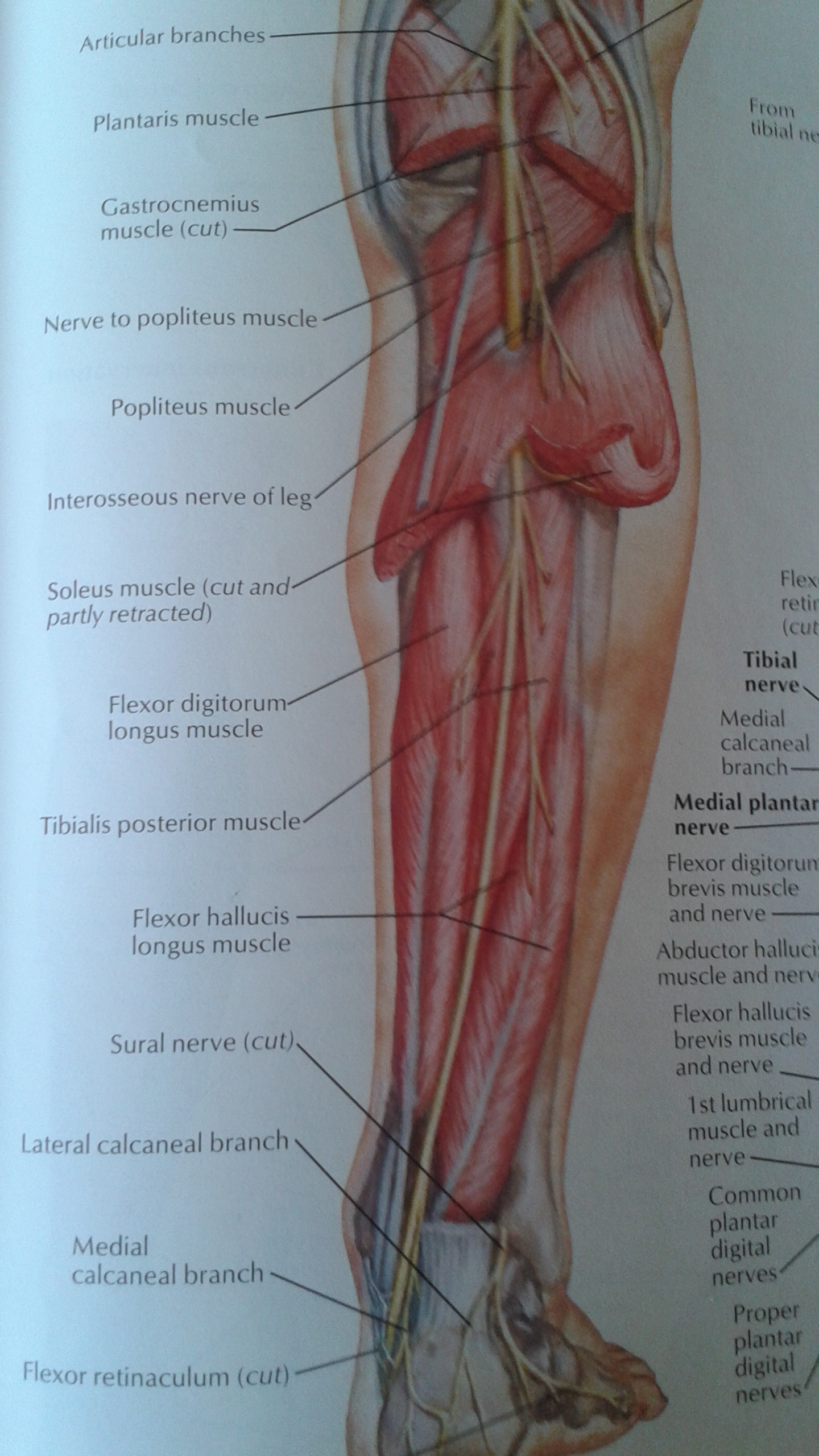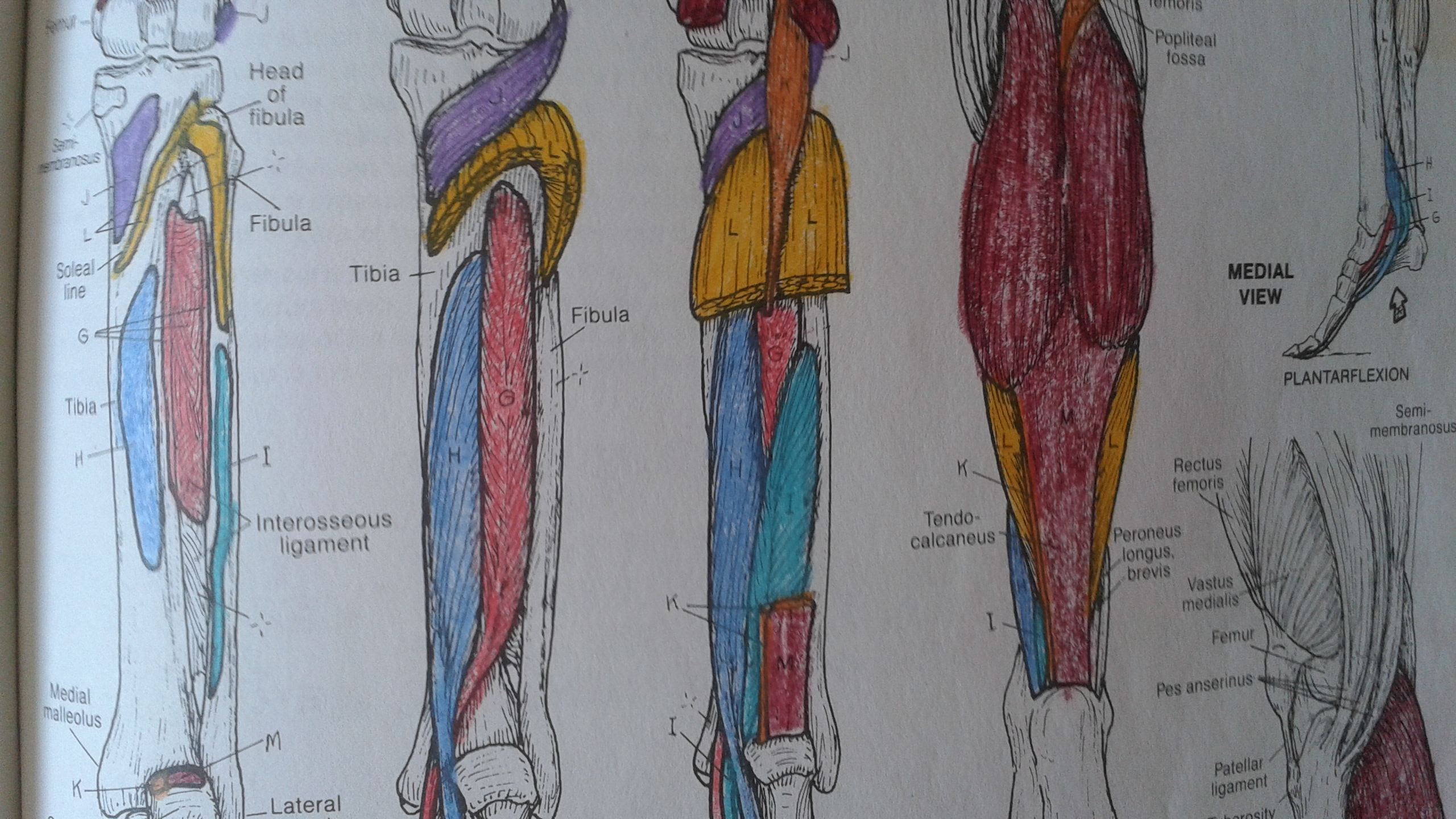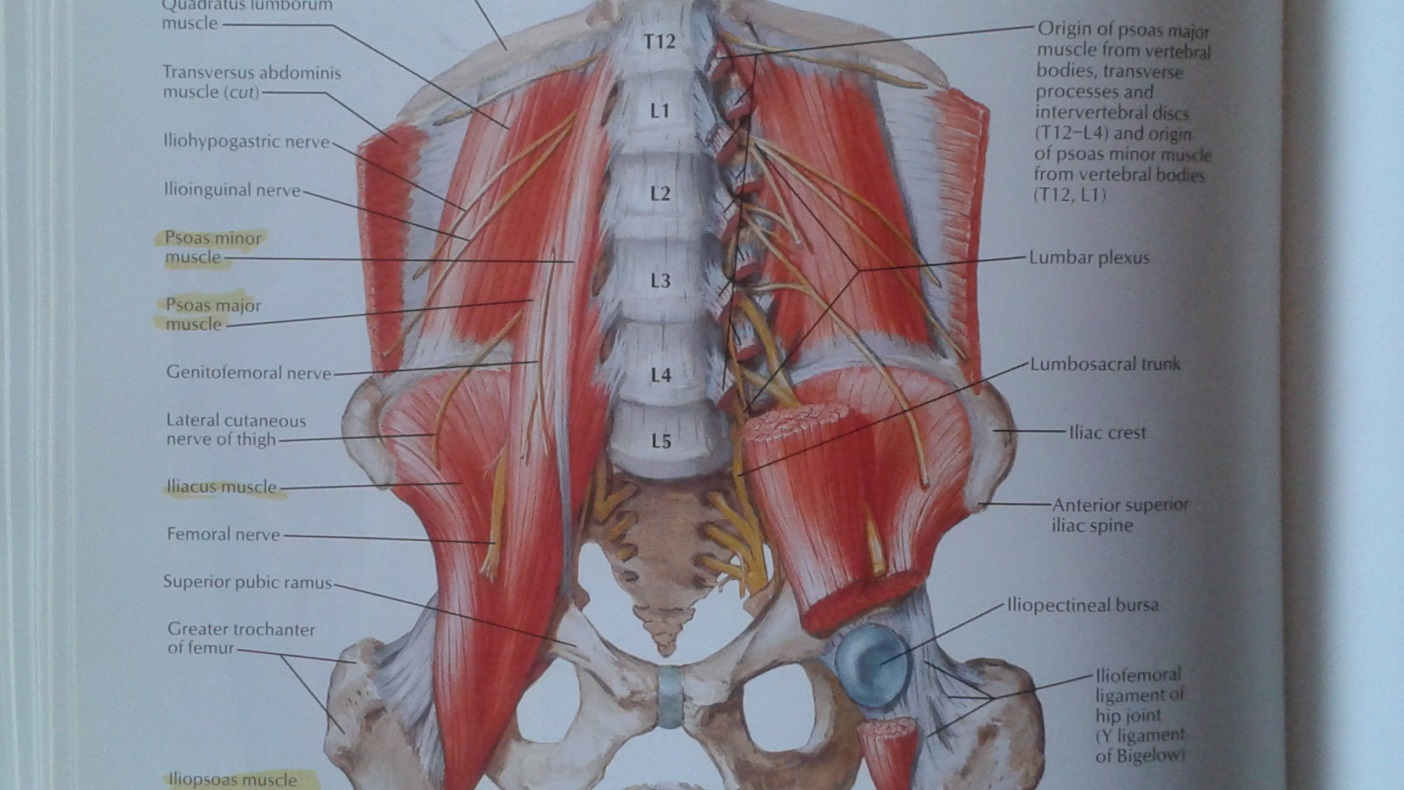Jump to:
Just what is going on in the “calf” muscle…?
People often think of the “calf” muscle only as Gastrocnemius (Gastroc). Much of calf pain is often due to tension in the Soleus muscle which is deep to the Gastroc.
An easy stretch of the Soleus muscle can be performed by sitting flat on the floor with both legs outstretched in front of you. Take a bath towel and grab both ends as you let one foot sit in the middle of it like a stirrup – using the ball of your foot as if you are pressing on the accelerator of a car, push against the towel and provide resistance as you grip the towel with your hands at both ends (which should be close to your knee - be careful not to strain your low-back as you do this).
Please take a look at the illustrations below to get an idea of where things are... If you have any questions, please don’t hesitate to ask me directly or through my website contact page.
Posterior Leg Plate 505 (Netter, Frank, M.D., Atlas of Human Anatomy, 2nd ed., Novartis, 1997)

Below are layers of your posterior lower leg from superficial to deep, reading from Right to Left... You can see in gold color the origin of the Soleus muscle and how it sits beneath the Gastroc. Often we feel tension at the outer edges of the lower posterior leg, at the Achilles tendon where both Gastroc and Soleus meet.
Color Codes for deeper layers (beneath Gastroc):
orange: Plantaris
purple: Popliteus
gold:Soleus
green: Flexor Hallucis Longus
red: Tibialis Posterior
blue: Flexor Digitorium Longus
We will look more closely soon at movements of the lower leg and foot and how they affect all of these muscles. Stay tuned!
Muscular System/Lower Limb Muscles of Posterior Leg (Kapit, W; Elson, L. M., The Anatomy Coloring Book. 2nd Edition, Addison-Wesley, 1993)

Low Back Pain and the Ilio-Psoas Muscle Group
Lots of yoga students will hear the muscle Psoas mentioned, in particular when instructors are teaching “hip-openers.” First, let’s all get on the same page with our Kinesiology…
Flexion and Extension are two contrasting movements that may occur at any joint. Your hips are “closed” by nature of flexion of the hip joints. To use an obvious example, Hip Flexion occurs when we go from standing to a seated position, Hip Extension occurs when we stand up from a seated position.
Psoas Major and Minor are often referred to singularly as Psoas, what makes this muscle a true Hip Flexor, is that it joins the muscle Iliacus to form the IliosPsoas muscle group.
The IlioPsoas group is a hip flexor because of the way (anteriorly) it crosses one of the joints of your hips. Looking at the anatomical illustration below, we can see that the IlioPsoas group, which as I mentioned consists of Psoas Major, Psoas Minor and Iliacus, begin at the 12th Thoracic vertebrae (Psoas Major only) and eventually cross the hip (anteriorly) then joining Iliacus to attach to the lesser trochanter of the femur bone. I would like to note here that the Psoas group is not only a powerful Hip Flexor, but it is also a flexor of the Lumbar Vertebrae. Again, flexion (anterior) is the folding forward of any joint – as I described below in the section on the Quadratus Lumborum muscle, when we are in a seated position, folding forward towards the computer monitor, we are effectively putting our lumbar vertebrae into Anterior or Forward Flexion.
(Netter, Frank, M.D., Atlas of Human Anatomy, 2nd ed., Novartis, 1997)

So, yoga students and all, to “open your hips”, you are putting your hip joints and your lumbar vertebrae into Extension. That can be any range of asana (Yoga poses) from Warrior to Pidgeon…
Having work done by a massage therapist on the Psoas muscle (major and minor) is very intense for a number of reasons. Mainly because accessing this muscle group requires work done on the abdomen, where most of us are very guarded and tense. However, the benefit of massage to this muscle can be drastic in its effect on low back pain. If you think of how most people spend too much time in hip flexion, you can see how restriction the Psoas Group may contribute greatly to this common and painful condition…
So, in addition to your Warrior and your Pidgeon Poses, get some Psoas work done by your trusted massage therapist! This is the therapist who knows how to slowly approach this sensitive area: warming the layers of the abdomen, and having you flex your hip by bending your knee and folding your leg towards your tummy… before attempting to reach this deeper layer where the Psoas resides. All the while staying in close communication with you on your comfort level – you will in no time understand the benefit of this lovely, albeit challenging work.
Happy Low-Back Health to All!
Low Back Pain and the "Hip-Hiker"
Low Back Pain, most likely, we've all had it at one point... Tension in the Quadratus Lumborum muscle is a common cause of low back pain and discomfort. There are many causes for tension in this muscle as it is a "prime mover" in bilateral extension of the lumbar vertebrae (sitting up straight!) and unilaterally a lateral flexor of the lumbar vertebrae.
To understand lateral flexion of the lumbar vertebrae, imagine you are holding a sack of groceries or a small child on one hip. Guess what...? You are uni-laterally flexing your lumbar vertebrae. That means, among many other things (other involved muscles and joints, etc.) the quadratus lumborum is shortened on one side (the side with the child or sack of groceries) and lengthened on the other. In an anatomy class at the Swedish Institute, an instructor there referred to this muscle as the "hip hiker" as it "hikes" up your hip on one side...
If you take a look at the magnificent artistry of Frank Netter in the illustration below, you will see that quadratus lumborum goes from the last (12th) rib, along the lumbar vertebrae and to the iliac crest (the top of your hips which you can feel when you reach around to your back with your hands, specifically, with your thumbs).
Posterior view of the low back - Quadratus Lumborum (Netter, Frank, M.D., Atlas of Human Anatomy, 2nd ed., Novartis, 1997)

In order to find this muscle on yourself, wrap your hands around your hips (as if you're standing like a super-hero!), your thumbs behind you on your back and your fingertips in front of you on your abdomen, under your ribs. ...like a super -hero!
Now, take your thumbs and move up to find your last (12th) rib, that is the start of the Quadratus Lumborum, or QL.
A wonderful and easy way to self-massage this muscle, is to stay in the above mentioned position, thumbs on the QL, widen your stance to hip-width or wider (horse stance), bend your knees, and start to rotate your hips around in big circles, as if you are doing a slow-motion Hula Dance - you can then start to take slow, exaggerated steps, bending forward and back, swooping your hips and moving your thumbs along the QL muscle. Be creative and have fun but be careful... As you "hike" that hip up, your thumb against the QL, you will get an excellent self-massage of this muscle... all while practicing your Hula Dancing and Super-Hero pose...!
Stretching QL
When you’re not doing this self-massage, a simple and effective stretch of this muscle is the seated forward bend. Sitting in a chair with your feet at hip-width and flat on the floor, simply fold forward at your hips, letting your head hang down between your lower legs with the simple help of gravity. In this position, all your vertebrae get a nice lengthening, stretching the muscles in between. Specifically, you can feel the lengthening/stretching of the QL from your lilac bone (top of your hips in the back) to the 12th rib. A bonus of this stretch is that your hips are evenly rooted on the chair, lessening the chance that your hips are unevenly positioned.
Other things to think about for the QL and low back pain:
Try to become body-aware of how you are sitting, sleeping, walking, breathing...yes, pretty much everything. Sorry, but these seemingly harmless, everyday movements and postures can have big effects on low-back health. Ask yourself: do you always sleep on one side (hiking one hip more than the other...)?; do you often stand for long periods with one foot outstretched more than the other?; do you always cross one leg more than the other? So, even with our every breath, we may hike one hip higher...those in chronic or frequent gastro-intestinal distress, for instance, may feel tension in their guts and then adjust their hips to accommodate for this. Try to self-assess as often as possible for these subtle postural habits...
And then, not so subtle..., sit up straight! As mentioned in the description of the actions of Quadratus Lumborum, it is an "extensor" of the lumbar vertebrae. That means, if we are hunched over at our desks, ever trying to reach our skulls further in the computer monitor...(stop that..!) or if you're simply forward-slumped over in your chair or standing with in a forward-slump, head and chin down - in all of these postures, we are effectively putting our lumbar vertebrae into forward (anterior) flexion. QL does not like this for extended periods of time...nor does the PSOAS muscle group, but we'll get to that later... So, sit up straight. Use the imagery of a string that is gently tied to the top of your head and attaching to the ceiling or the sky. Imagine you are a dancer, or a professional athlete. You have beautiful, perfect posture, and a healthy, pain-free back!
